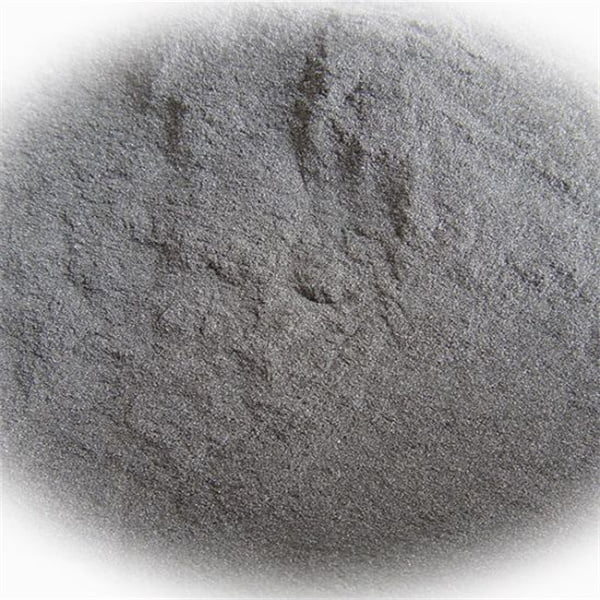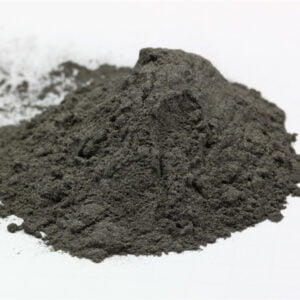Aditivní výroba MIM
Obsah
aditivní výroba mim označuje průmyslový proces výroby malých, složitých kovových dílů ve velkých objemech. Kompozitní kovová prášková surovina se pomocí vstřikovacího zařízení vytvaruje do zeleného tvaru, odbední se a poté se slinuje, aby se dosáhlo plné hustoty.
MIM využívá geometrickou flexibilitu vstřikování polymerů a tváření na zelené louce s výkonnostními schopnostmi kovových slitin. S rozšiřujícími se možnostmi aditivních výrobních procesů se tento průvodce zabývá složením, vlastnostmi, aplikacemi, specifikacemi, procesními postupy, dodavateli, kompromisy a nejčastějšími dotazy.

Složení slitin MIM
Jako suroviny pro MIM je k dispozici mnoho složení:
| Materiál | Běžné slitiny | Přehled |
|---|---|---|
| Nerezová ocel | 316L, 17-4PH, 420 | Odolnost proti korozi, vysoká tvrdost, pro lékařské použití |
| Nástrojová ocel | H13, P20 | Vysoká pevnost, tepelná odolnost, pro lisované nástroje |
| Slitina hliníku | 2024, 6061, 7075 | Lehká konstrukce s vysokým poměrem pevnosti a hmotnosti |
| Slitina titanu | Ti-6Al-4V | Lehká konstrukce s odolností proti korozi a vysokou pevností pro použití v letectví a kosmonautice |
| Slitina niklu | Inconel 625 a 718 | Odolnost proti teplu/korozím vhodná pro turbo stroje |
| Wolfram | WHA, WC | Extrémně vysoká hustota ideální pro vyvažovací aplikace |
V závislosti na potřebách jsou k dispozici standardní i zakázkové receptury.
Vlastnosti aditivní výroba mim
Kromě složení přizpůsobeného výkonnostním požadavkům patří mezi klíčové výsledné vlastnosti:
| Vlastnictví | Popis |
|---|---|
| Hustota | Rozsah od hustoty blízké čistému kovu až po teoretickou hustotu vyšší než 95%. |
| Pevnost v tahu | 250 MPa až více než 1300 MPa v závislosti na strategii vyztužení |
| Tvrdost | V závislosti na zvolené slitině lze dosáhnout až 70 HRC |
| Odolnost proti korozi | Možnost různých úrovní odolnosti podle zvoleného složení |
| Drsnost povrchu | Jako výlisek <6 μm Ra až <0,2 μm Ra po pokovení/leštění |
| Komplexní geometrie | Lisování umožňuje vytvářet složité tvary, kterých nelze dosáhnout jinými postupy. |
| Rozlišení funkcí | Malé drážky, otvory, závity až do ~100 μm " dosažitelné |
| Tloušťka stěny | Stěny o tloušťce až ~0,25 mm tvarované na základě geometrie |
| Tolerance | Přísnější tolerance než u kovových AM, typicky ±0,3% rozměrů. |
Díky těmto schopnostem je MIM vhodný pro přesné součásti pro konečné použití.
Aplikace aditivní výroby MIM
Geometrická flexibilita a na míru šité složení MIM vyhovují různým průmyslovým odvětvím:
| Průmysl | Příklady součástí |
|---|---|
| Automobilový průmysl | Ozubená kola, vahadla, součásti turbodmychadla |
| Aerospace | Lopatky turbíny, oběžná kola, vodicí lopatky trysek |
| Střelné zbraně | Spouště, pojistky, závěry, vyhazovače, náhubky |
| Lékařské/zubní služby | Rukojeti skalpelů, kleště, lebeční destičky, korunky |
| Ropa a plyn | Díly ventilů včetně těles, dříků, pohonů |
| Mikroelektronika | Štíty, konektory, kolíky, distanční prvky, aktuátory |
MIM také pomáhá vytvářet nástrojové vložky, které jsou schopné provádět hromadnou výrobu tvářecích/formovacích operací.
Specifikace vstupních surovin pro MIM
Vlastnosti vstupních surovin vyžadují pečlivou kontrolu tolerance a funkční způsobilosti:
| Parametr | Typická specifikace | Zkušební metoda |
|---|---|---|
| Velikost částic prášku | 3 - 20 μm | Difrakce laseru |
| Nakládání prášku | >55 vol% | Termogravimetrická analýza |
| Zdánlivá hustota prášku | 2,5 - 4 g/cm3 | Hallův průtokoměr |
| Hustota poklepání | >4 g/cm3 | Klepání na volumetr |
| Viskozitní křivka | Závislost na smykové rychlosti | Kapilární reometrie |
| Rozdělení velikosti pelet | 2 - 4 g citlivé na tvar | Sítování |
Tyto specifikace podporují tok formy a zároveň zajišťují pevnost zeleného těla a slinutého materiálu.
Přehled výrobního procesu MIM
- Vývoj kompozitní suroviny s požadovaným systémem prášek + pojivo
- Peletizace vstupních surovin pro přesnou kontrolu objemového výstřelu
- Vstřikované díly s přísnými tolerancemi a povrchovou úpravou
- Chemické odvázání a odstranění obsahu polymerů
- Spékané pelety s teoretickou hustotou >92%
- Strojní prvky podle potřeby, pokud to geometrie umožňuje
- V případě potřeby použijte dodatečné pokovení, tepelné zpracování, povlakování atd.
- Testování a ověřování kvality pro výrobu
Ten je i nadále optimalizován pro spolehlivost při vysokých objemech.
Dodavatelé zařízení a surovin pro MIM
| Společnost | Materiály | Schopnosti |
|---|---|---|
| BASF | Široká škála slitin MIM | Kompletní kvalitní suroviny |
| Sandvik Osprey | 316L, 17-4PH, více | Odborné znalosti v oblasti atomizace přenesené do MIM |
| MPP | Nástrojové oceli, nerezové oceli, zakázkové oceli | Také přední zařízení MIM |
| CN Innovations | Vlastní slitiny | Specialisté na nové kompozice |
| Parmatech Corp | Ti slitiny, nástrojové oceli, Fe slitiny, exotika | Zařízení a vstupní suroviny |
Dodavatelé nabízejí doplňkové vybavení, jako jsou lisovací stroje a pece, které umožňují výrobu na klíč.
Kompromisy při zvažování MIM AM
Klady:
- Konsolidace velmi složitých geometrií a sestav
- Vynikající mechanické vlastnosti díky rovnoměrným jemným zrnům
- Skvělé rozlišení povrchové úpravy jako u výlisků
- Prokázaná škálovatelnost hromadné výroby po získání kvalifikace
- Nízké plýtvání surovinami v porovnání s tiskem na kov
- Využití stávajícího know-how v oblasti vstřikování plastů
Nevýhody:
- Vysoké počáteční náklady na přípravu surovin a nástrojů
- Intenzivní kvalifikace nových dílů a aplikací
- Omezený rozsah velikostí do několika kilogramů
- Omezeno na slitiny dostupné jako prášek
- Obecně nižší mez pevnosti než výkovky
- Náklady na jeden díl jsou vyšší než u jiných procesů, dokud není objem >10k.
Technologie MIM je díky svým zkušenostem vhodná pro výrobu malých složitých kovových součástí.

Často kladené otázky
Jak malé prvky lze pomocí MIM prakticky tvarovat?
Typické dolní hranice rozsahu se pohybují kolem 100-150 mikronů pro průměr otvoru a tloušťku stěny formy kolem 0,3 mm (~12 tis.), v určitých geometriích i tenčí.
Co určuje mezní rozměry dílů MIM?
Obecné potíže při manipulaci s tenkostěnnými tvary o délce toku přibližně 5" bez prohýbání nebo deformace. Maximální tloušťka obvykle pod 0,5" a hmotnost do 5 liber.
Umožňuje MIM funkčně odstupňované (FGM) kompozity?
Ano, pokročilé procesy lisování nyní podporují přizpůsobenou pórovitost nebo prostorově odstupňované vícepráškové vstupní suroviny v rámci jedné lisované součásti během výroby.
Kolik slitin je komerčně dostupných jako vstupní suroviny pro MIM?
Existuje více než 60 základních složení - nerezové oceli řady 300 tvoří více než 50% celkového trhu, dále rostou nástrojové oceli, titanové slitiny a niklové superslitiny.
Jaké dokončovací procesy obvykle následují po MIM?
K běžným sekundárním operacím patří dokončování hlavně/vibrační odstraňování otřepů, broušení povrchu, kuličkování, laserové značení, pasivace, pokovování, tepelné zpracování, spojování a kontrola.
Sdílet na
MET3DP Technology Co., LTD je předním poskytovatelem řešení aditivní výroby se sídlem v Qingdao v Číně. Naše společnost se specializuje na zařízení pro 3D tisk a vysoce výkonné kovové prášky pro průmyslové aplikace.
Dotaz k získání nejlepší ceny a přizpůsobeného řešení pro vaše podnikání!
Související články

Vysoce výkonné segmenty lopatek trysek: Revoluce v účinnosti turbín díky 3D tisku z kovu
Přečtěte si více "O Met3DP
Nedávná aktualizace
Náš produkt
KONTAKTUJTE NÁS
Nějaké otázky? Pošlete nám zprávu hned teď! Po obdržení vaší zprávy obsloužíme vaši žádost s celým týmem.

Kovové prášky pro 3D tisk a aditivní výrobu
SPOLEČNOST
PRODUKT
kontaktní informace
- Město Qingdao, Shandong, Čína
- [email protected]
- [email protected]
- +86 19116340731











